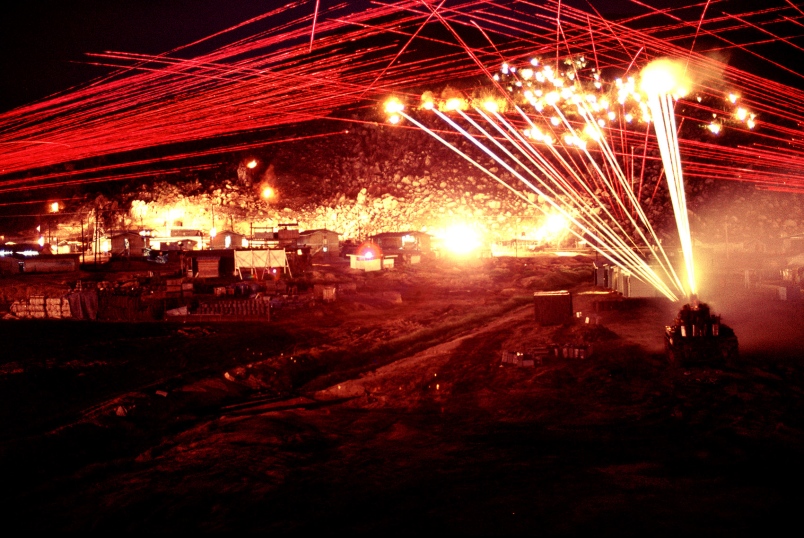Editor’s note: James Speed Hensinger submitted this stunning timelapse photograph of the gunfire that was unleashed to stop a Viet Cong gunner near his unit’s base in Phu Tai in April 1970. The photo has been featured in publications such as the Daily Mail and Guardian, and is reprinted here with permission. Hensinger describes how he took the photo below.
Using my own camera and film during my off duty time, I took a series of long-exposure 35mm Ektachrome images of our compound responding to the threat of a sniper on "our" mountain. I call him a sniper despite the fact that he wasn't. I don't know what term to apply to him. Well, that's not really true. One of our favorites was "Asshole." The sniper was really pissing us off. On random nights a single Viet Cong would lean over a boulder and blow off a mag on full-auto from his AK-47. The rounds impacted on our corrugated metal roofs and blew through where off-duty men were sleeping.
Shooting long exposure photographs of gunfire is tricky. The dark areas need to be exposed enough to provide a setting for the brightly lit events. Being able to see the dark areas puts a perspective to the bright events, and makes a big difference in the effectiveness of the photo. Since the events are transitory, the shutter needs to be open long enough to acquire enough events to make the point of the photo. In this case a low ASA/ISO of 64 helps by preventing overexposure of the dark areas, while still acquiring lots of events.
Of course, the camera needs to be absolutely motionless to prevent blur, which is why I rested the camera on a sandbag re-enforced wall in the perimeter tower furthest from the base of the mountain. Using a cable release also prevents any jiggle caused by a heavy shutter finger. However, it is still important not to move the cable release while the shutter is held open because the camera may be jiggled by that too.
The red tracers are from M60 7.62 mm machine guns. The tracers are loaded four to one. That means there are actually five times as many bullets in the photo as are seen with the red tracers. The white bursts without tracers are from a Ma Deuce, M2 Browning, .50 caliber machine gun firing HE (High Explosive) rounds.
The white tracers with explosions are from twin 40 mm (1.57 inch) anti-aircraft Bofor guns mounted on an open turret M42 Duster track. The 40 mm guns were the same as the familiar navy anti-aircraft Pom-Pom guns. We actually had U.S. Navy manuals for them. The bright white lights at ground level are hand launched parachute flares that hit the ground and are still burning. You can also see some of the rounds ricocheting off the rocks.
We sent out patrols during the day, and found a blood trail one morning. Otherwise, we never found him. The rocks on the slope were as big as Volkswagens. It took a very stupid officer to put a pin in the map and say, "Build it here."

